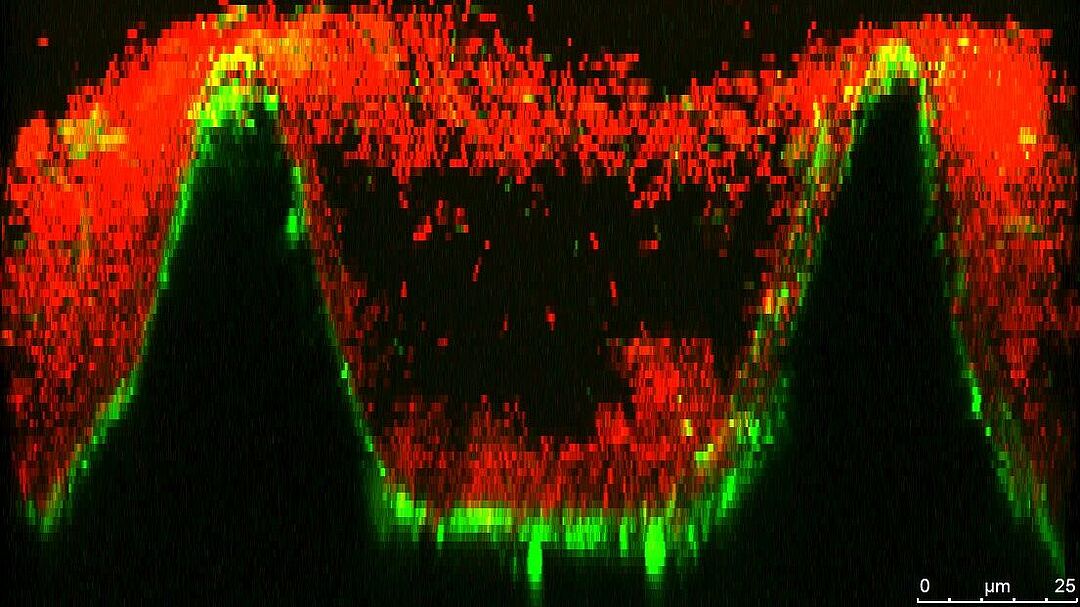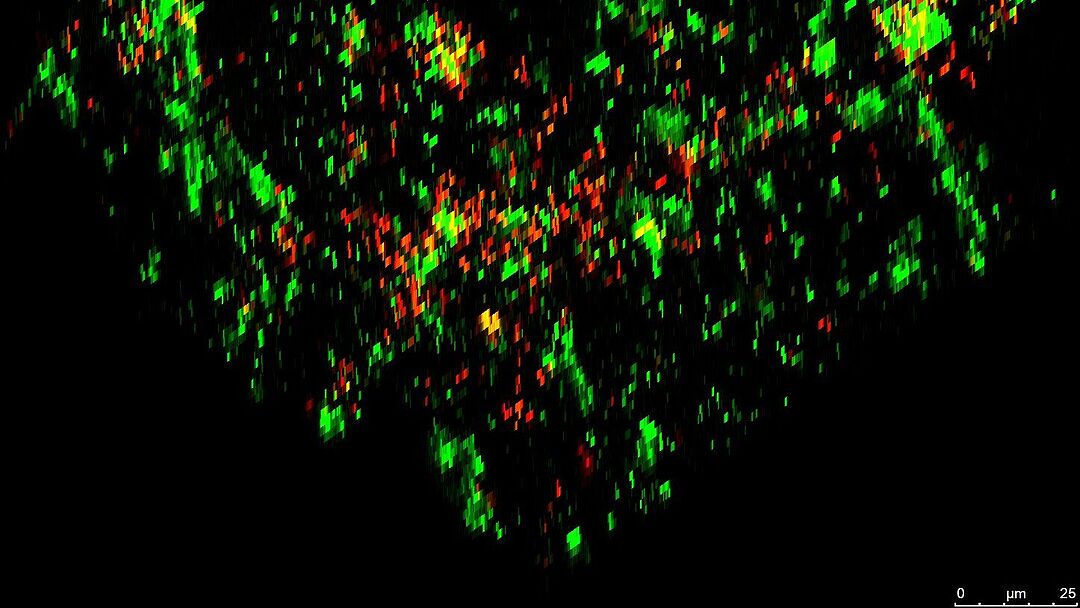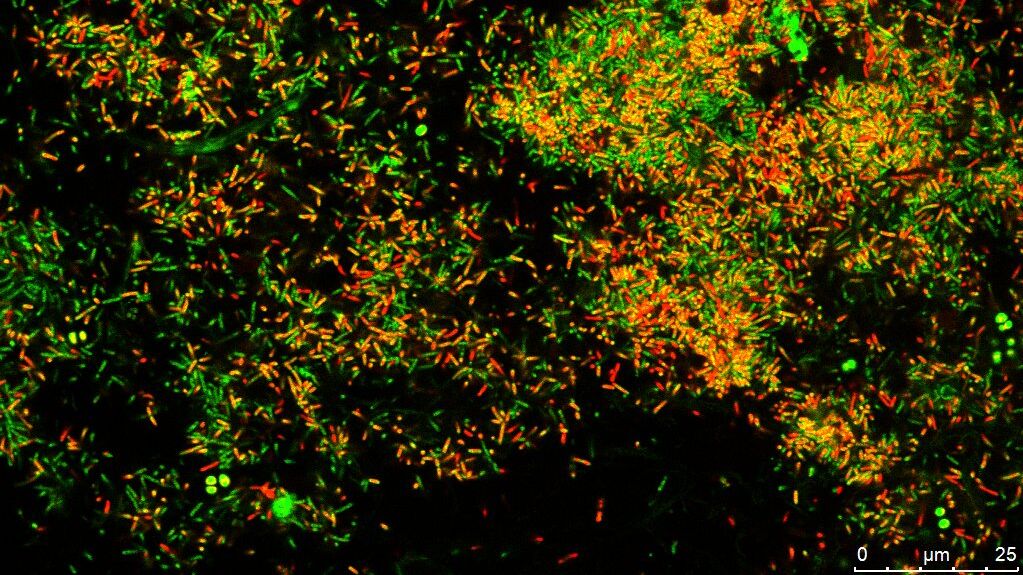Avoidance, use and control of biofilms
This group is working on avoidance, use and control of biofilms. The majority of bacteria usually occur as a biofilm. A biofilm is a diverse community of microorganisms consisting of bacteria, archaea, algae, fungi and protozoa embedded in an extracellular polymeric matrix (EPS). Biofilms colonize all natural and technical surfaces and interfaces in contact with water, such as drinking water and sewage pipes, plants or even teeth. These microbial communities play a crucial role in most biosphere processes and hold a great potential for the development of sustainable biotechnologies to solve environmental problems such as wastewater treatment, resource recovery and the production of "green" energy (biogas). However, they can also be problematic when colonizing technical devices (biocorrosion, biofouling) or medical implants.
This working group aims to gain insights into the management of biofilms in technical and natural water systems, particularly of microbial communities in sewers (microbial deterioration), the hyporheic zone of rivers (pollutant degradation) and household appliances (hygiene aspects). Biofilm diversity, their metabolic potential and interactions between biofilm formation and surfaces (bacterial adhesion, antimicrobial surfaces) are of specific interest.
The high complexity of biofilms requires different approaches to unravel their composition, functions and interactions. These include methods such as confocal laser scanning microscopy (CLSM), Illumina sequencing or Oxford Nanopore sequencing (ONP).
Research Areas:
• Biofilm characterization
• Isolation and characterization of new species
• Microbial transformation of trace pollutants




